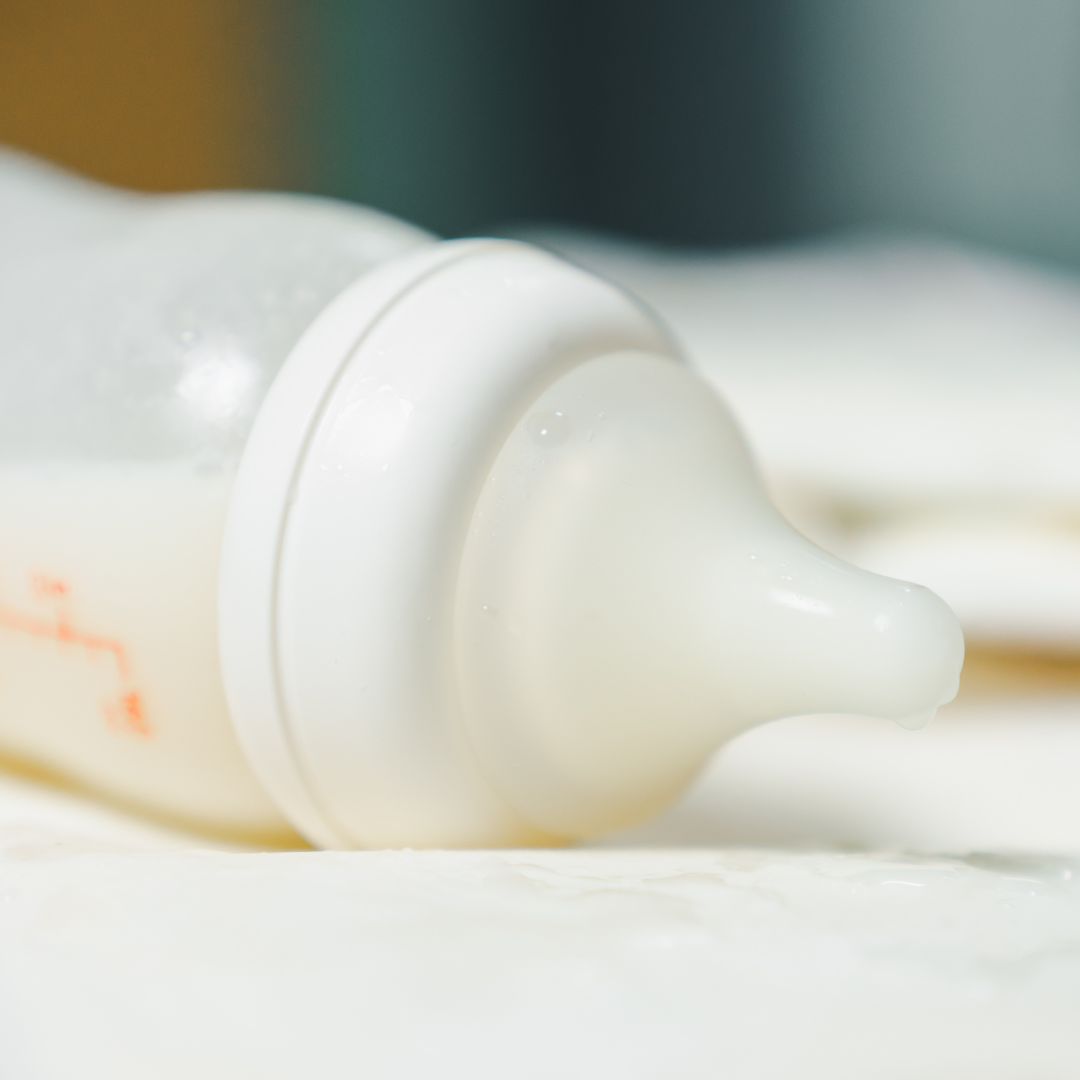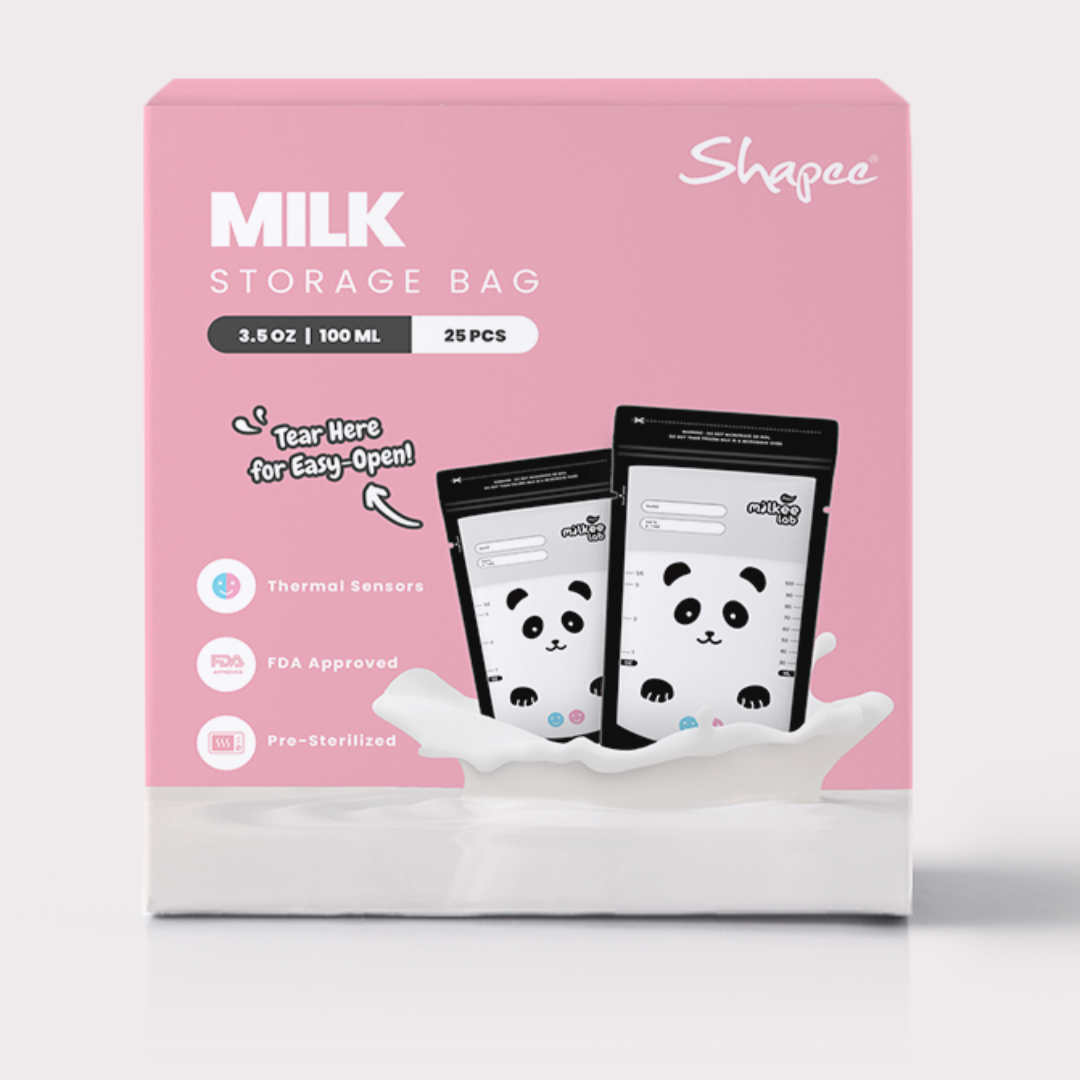Elegant Solutions for Breastfeeding Moms: Perfecting Breast Milk Temperature
UNDERSTANDING THE SCIENCE OF BREAST MILK TEMPERATURE

THE ROLE OF TEMPERATURE IN BREAST MILK QUALITY
Breast milk temperature is crucial for preserving its quality and ensuring a safe, comfortable feeding experience for babies. Ideally, it should be served at body temperature (around 98.6°F or 37°C) to retain its nutrients and antibodies while mimicking natural breastfeeding. Keeping milk at the right temperature also helps prevent bacterial growth and maintains its taste and consistency. Although breast milk can be stored at different temperatures, warming it carefully before feeding without overheating is best to protect its valuable nutrients.
HOW BREAST MILK TEMPERATURE AFFECTS BABY'S HEALTH
The temperature of breast milk plays a key role in a baby's health, digestion, and overall feeding experience. Cold milk may cause discomfort, while overheated milk can harm a baby's delicate mouth and destroy vital nutrients. Warming breast milk to the right temperature not only preserves its immune-boosting components and healthy fats but also aids digestion, helping to prevent gas and colic. Maintaining a consistent, warm temperature can also provide comfort and support regular feeding routines, making the experience more pleasant for both mother and baby.
BEST PRACTICES FOR MAINTAINING OPTIMAL MILK TEMPERATURE
Maintaining the optimal temperature of breast milk is essential for preserving its safety and nutritional value. Always store milk in clean, sterile containers and refrigerate or freeze it promptly. When warming, use a bottle warmer or a warm water bath never direct heat and test the temperature on your wrist before feeding. Thawed milk should not be refrozen and must be used within 24 hours. Handle milk with clean hands and sanitized equipment and avoid exposing it to high temperatures or sunlight. These simple practices help ensure your baby receives safe, nourishing milk every time.

THE ART OF MAINTAINING WARM BREAST MILK
Selecting the Right Insulated Bottles and Accessories
Choosing the right insulated bottles and accessories is essential for keeping breast milk at the optimal temperature. Double-wall insulated bottles help maintain warmth for longer periods, and some even feature built-in temperature indicators for easy monitoring. A reliable bottle warmer ensures safe, even heating while preserving nutrients. For moms on the go, insulated bottle carriers keep milk cool until it's time to warm it, some even include built-in warming options. Adding silicone sleeves to bottles provides extra insulation, protects against breakage, and improves grip for little hands.
Timing and Techniques for Breast Milk Preparation
1. Plan: Thaw frozen breast milk in the refrigerator overnight to allow gradual and safe defrosting while preserving its nutrients.
2. Use the "first in, first out" rule: Always use the oldest stored milk first to prevent spoilage and ensure no goes to waste.
3. Warm milk gradually: Avoid direct heat; instead, place the bottle in a bowl of warm water for 5–10 minutes to warm it gently and evenly.
4. Swirl don’t shake: Gently swirl the bottle to mix the fat that may have separated, as shaking can break down the milk’s natural proteins.
5. Test temperature: Before feeding, place a few drops on your wrist should feel lukewarm or neutral, not hot, to avoid burning your baby’s mouth.
6. Serve immediately: Once warmed, breast milk should be used within 30 minutes to reduce the risk of bacterial growth.
7. Practice hygiene: While sterilization isn’t necessary if cleanliness is maintained, always wash your hands and ensure all feeding equipment is properly cleaned before use.
Innovative Products for Ensuring Warm Milk Ready to Feed
Several innovative products make it easier to keep breast milk warm and ready for feeding anytime. Smart bottle warmers offer precise temperature control through app-connected settings, ensuring the milk is never overheated. Portable warmers, often battery-powered, are ideal for warming milk while on the go. All-in-one systems combine pumping, storage, and warming functions in one device for added convenience. Self-warming bottles use built-in technology to heat milk without electricity, perfect for travel or outdoor use. Thermal flasks are also a practical choice, keeping water hot for warming bottles wherever you are. These tools enhance convenience, especially during night feeds or travel, but should always be used in line with product instructions and alongside proper milk storage and handling practices.
INTEGRATING ELEGANT SOLUTIONS INTO DAILY ROUTINES
Routines for Nighttime and Daytime Breast Milk Preparation
Establishing a smooth daytime routine for breast milk preparation can greatly ease a breastfeeding mom’s daily schedule. Begin with milk in the morning, when the supply is typically at its peak. Store the milk in small portions to make it thaw quicker and reduce waste. Prepare bottles ahead of time and keep them in the refrigerator for easy access throughout the day. When it’s time to feed, gently warm the milk using a bottle warmer or warm water bath. After each use, ensure all pumping and feeding equipment is thoroughly cleaned and sterilized to maintain hygiene and protect your baby’s health.
For smoother nighttime feedings, it helps to set up a dedicated station with all the essentials within reach. Prepare bottles before bedtime and store them in an insulated cooler to keep them fresh. A bottle warmer with an auto shut-off feature ensures safe, hassle-free warming during the night. In some cases, freshly expressed milk can be fed at room temperature for quicker middle-of-the-night feeds. Keeping the lights dim helps maintain a calm, restful environment for both mom and baby. Following a consistent routine like this can make nighttime feedings more efficient and less stressful.
Tips for Combining Efficiency with Elegance in Milk Storage
1. Use clear, stackable containers: Transparent containers allow you to easily see the milk inside and stack neatly in the fridge or freezer, saving space and keeping things organized.
2. Label milk with date and amount: Clearly marking each container helps you follow the “first in, first out” rule and ensures you always know how much milk is available immediately.
3. Use silicone trays to freeze milk in small portions: Freezing in small amounts makes thawing quicker and minimizes waste, especially for top-ups or smaller feedings.
4. Use breast milk storage bags: These slim, flat bags are perfect for maximizing freezer space and are pre-sterilized for convenience and hygiene.
5. Create a stylish breastfeeding station: Design a cozy corner with a comfy chair, a small table for bottles and snacks, and elegant storage baskets or bins to keep essentials tidy making feeding time both efficient and enjoyable.
BALANCING THE CONVENIENCE OF READY-TO-FEED OPTIONS WITH HEALTHY MILK TEMPERATURES
Ready-to-feed options provide great convenience, but it’s important to also maintain healthy milk temperatures for your baby’s comfort and safety. Using insulated bottle carriers helps keep milk warm during outings, while a car bottle warmer is a handy travel companion. For quick feeds, room temperature milk can be used occasionally, and thermos bottles are perfect for keeping water warm to prepare bottles anytime. Pre-warming bottles just before leaving home ensure the milk is ready when you need it. Balancing convenience with the baby’s health is key, and by incorporating these thoughtful solutions, breastfeeding moms can offer perfectly warmed milk consistently. This blend of science, practicality, and care creates a smoother, more enjoyable feeding experience for both mom and baby.

